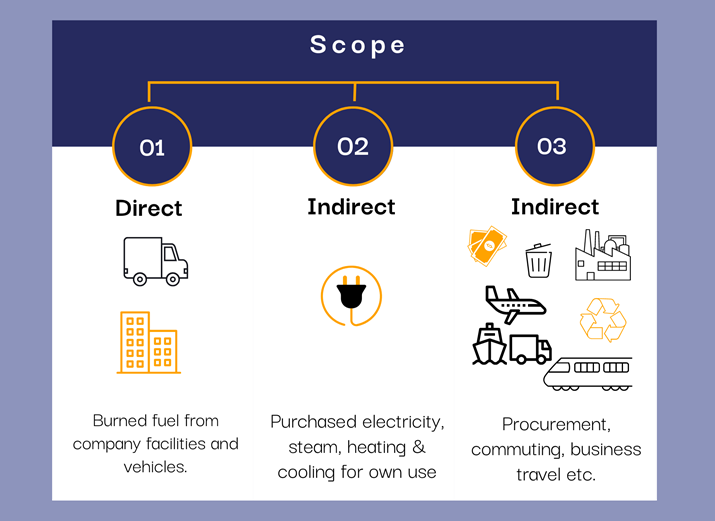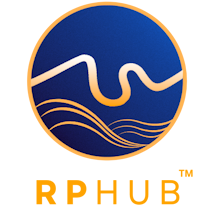Reducing greenhouse gases (GHG) in the fight against climate change is a key aspect of responsible business. In particular, greenhouse gases in supply chains, which make up a large portion of scope 3 emissions , typically form the greatest of all emissions.
Full Members of LUPC can take advantage of our Scope 3 supply chain emissions reporting benefit to add to the data they already have to complete a basic baseline and comparative measure.
Scope 3 Supply Chain Emissions Reporting for Members
LUPC and its UKUPC partners provide Scope 3 supply chain emission reports based on the Higher Education Supply Chain Emissions Tool (HESCET). This tool is owned centrally by HEPA and is managed by its Scope 3 Working Group made up of staff from UK member institutions, with input from UK Universities Purchasing Consortia (UKUPC).
How to obtain a Scope 3 Report
LUPC full members can receive a Scope 3 supply chain emissions report if they provide their non-pay spend data for analysis. This report will cover all of your Scope 3 emissions, not just your framework spend, but we need your data to do this.
Data must be submitted to our Data Analyst via the Spend inbox (spend@lupc.ac.uk) before the end of October (in the format requested) following the academic year (August-July).
HESCET uses a summary list of DEFRA emissions conversion factors for reporting. Further details on these factors can be found here: https://www.gov.uk/government/collections/government-conversion-factors-for-company-reporting
HESCET data is categorised into 10 broad categories using Proc HE codes, allowing Scope 3 supply chain emission reports to be released in January each year.
What can you do with the info gained from the report?
Only scope 3 emissions from the supply chain are included in this report. The analysis is based on spend methodology, which has its limitations. It provides members a cost-effective way to determine a broad indication of where to start tackling carbon reduction efforts in purchased goods and services.
Your reduction efforts should be detailed in your carbon reduction plan.
What is LUPC doing?
The LUPC Carbon Steering Group* calculates our carbon footprint and emissions are verified by a third-party. The full details of our Scope 1, 2 and 3 emissions can be found in our Greenhouse Gas (GHG) Report. The Report details a comprehensive account of our carbon footprint arising from our operations covering the period of 1 August 2023 through to 31 July 2024.
Following the production of our GHG report, LUPC has invested its carbon offsetting into two projects. The details of these can be found in our current carbon offsetting portfolio.
LUPC’s current Environmental policy contains the details on practical steps we are undertaking to reduce our emissions.
Framework for Carbon Offsetting and Validation Services
LUPC has also implemented a framework that delivers a national route to market for carbon offsetting and validation services, working in conjunction with The Energy Consortium (TEC) and EAUC.
For more information on the Framework, please contact Justin McLoughlin.
Guideline for working towards Net Zero with Suppliers
LUPC has developed a guideline based on Procurement Policy Note (PPN 06/21) and accompanying schedules. It describes the process that will be rolled out across framework agreement suppliers and includes templates for Carbon Reduction Plans for suppliers and an evaluation tool.
Members are encouraged to align this practice with non-framework agreement suppliers, as we drive towards achieving Net Zero. You can access this information via the Toolkit button below. For more information or support using these tools, please contact Mags Shapiro.
Useful terms:
1Carbon footprint: a carbon footprint measures the total greenhouse gas (GHG) emissions caused directly and indirectly by a person, organisation, event, or product.
GHG Protocol: an accounting tool used by organisations and governments to understand, quantify, and manage their GHG emissions. It provides the world’s most widely used GHG accounting standards. It was created in 2001, when the World Resources Institute and the World Business Council for Sustainable Development identified a need for consistency in how organisations accounted and reported emissions and together introduced the new standard [1]
Carbon neutral: Climate neutrality means that you bring your emissions down to zero; something that applies both to individuals and to organisations. Many organisations are not able to reduce their emissions to zero immediately however, as it will take a number of years for them to make the technological investments and change the habits that climate neutrality requires. But if they do not want to wait, they can – in addition to the reductions they can make now – also invest in emission reductions outside their organisation, known as offsets. This option helps accelerate the global effort to reduce emissions and puts a ‘carbon price’ on their own organisation, providing an economic incentive to reduce their own emissions quicker. Purchasing compensation units is also an option available to individuals and households, as – similarly to organizations – they will have difficulties becoming climate neutral immediately. Offsets are not a long-term solution, and they don’t replace the need for you or your organization to go to zero as fast possible, but they do provide a way to accelerate that journey.[2]
Net zero: Net Zero means that a company reduces its absolute emissions across its whole supply chain, in order to support the target to limit global temperature increases to 1.5 degrees Celsius, as agreed in the 2015 Paris climate summit.[3]
Carbon offset: Offsetting is a climate action that enables individuals and organizations to compensate for the emissions they cannot avoid, by supporting worthy projects that reduce emissions somewhere else. [4]
[2] United Nations Climate Change
[4] United Nations Carbon Offset Platform
For more information, please contact our Carbon Steering Group*:

Kai is responsible for all of LUPC’s data needs, including management information and spend data, as well as LUPC’s ICT systems. He develops internal reports for LUPC staff, executive committee and the board, and the annual member benefits and scope 3 reports.

Mags is responsible for helping LUPC to implement policy, develop and implement strategy, conduct research and training in responsible procurement. She assists member organisations with embedding responsible procurement within their sourcing processes and supports suppliers to meet rigorous human rights and environmental criteria set against global benchmarks.

Justin manages the Estates category alongside Julie Gooch.


